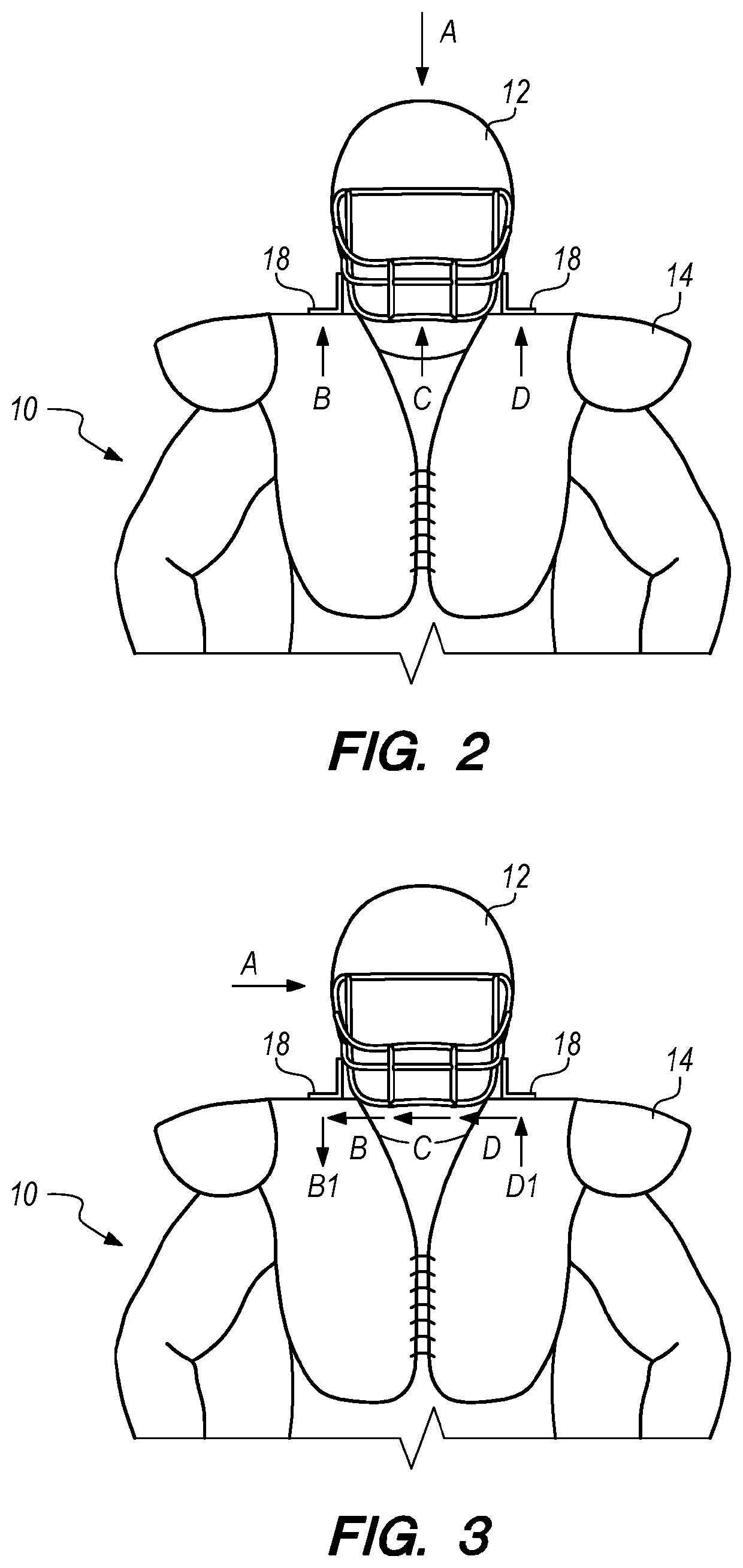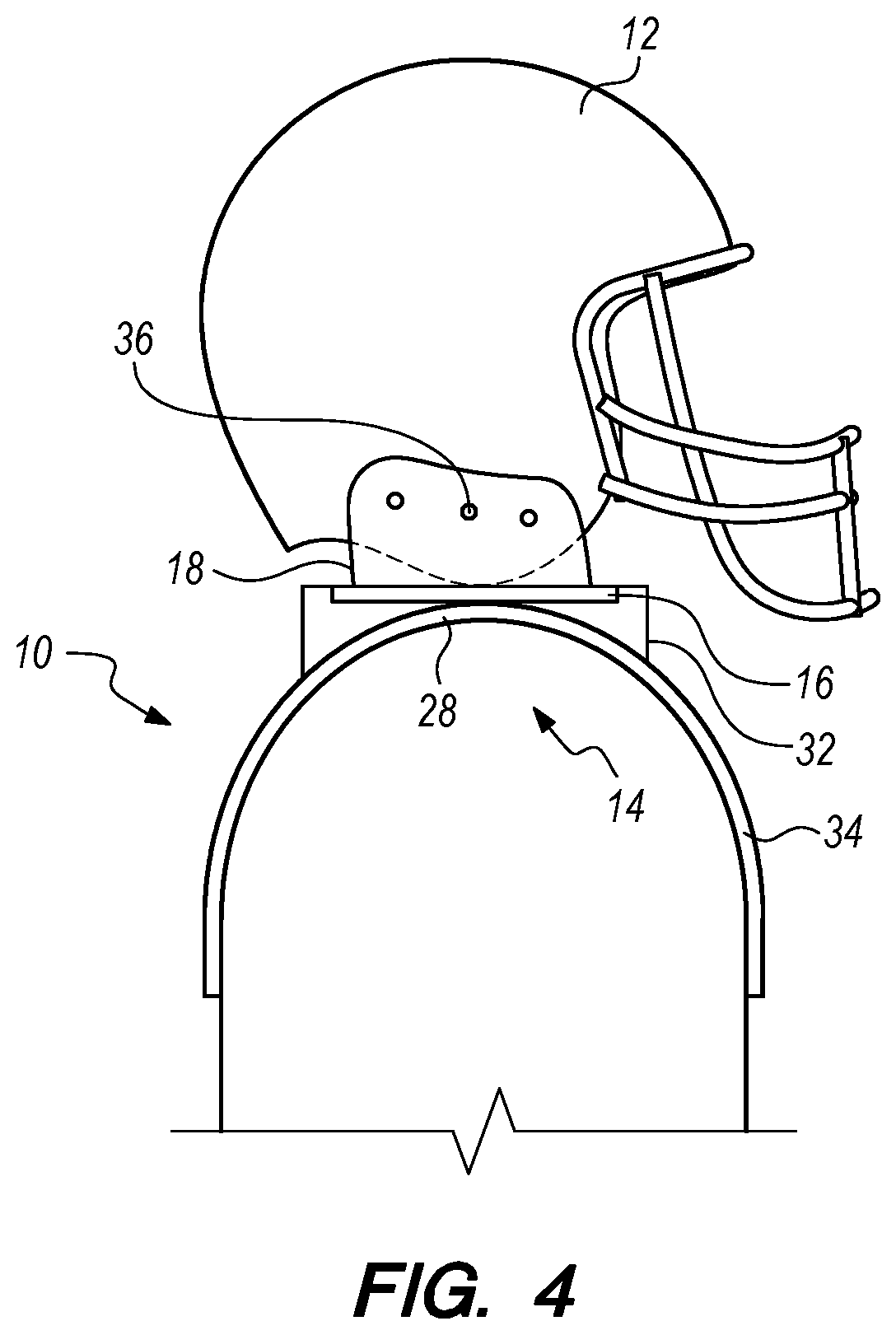Protective helmet attachment
a protective helmet and attachment technology, applied in the direction of protective garments, helmet covers, helmets, etc., can solve the problems of reducing the protection level of the the risk of this type of injury, and the severity of the effects later in life, so as to achieve the greatest protection, the effect of evenly dispersing the force of the blow, and reducing the risk of frontal or rear blows
- Summary
- Abstract
- Description
- Claims
- Application Information
AI Technical Summary
Benefits of technology
Problems solved by technology
Method used
Image
Examples
Embodiment Construction
)
[0021]Before the present invention is described in further detail, it should be understood that the invention is not limited to the particular embodiments described, and that the terms used in describing the particular embodiments are for the purpose of describing those particular embodiments only, and are not intended to be limiting, since the scope of the present invention will be limited only by the claims.
[0022]With reference now to FIG. 1, a general description of a first implementation of the invention may be described. Player 10 is shown wearing a conventional helmet 12 and shoulder pads 14. Helmet 12 and shoulder pads 14 are connected together, however, by links 18, circular track 16, mat 28, and shoulder pad straps 34. Links 18 may move freely within circular track 16, thus allowing the helmet to turn and thereby allowing the player to fully turn his head from side to side. Mat 28 provides a wide connection point between circular track 16 and shoulder pads 14 that distribu...
PUM
 Login to View More
Login to View More Abstract
Description
Claims
Application Information
 Login to View More
Login to View More - R&D
- Intellectual Property
- Life Sciences
- Materials
- Tech Scout
- Unparalleled Data Quality
- Higher Quality Content
- 60% Fewer Hallucinations
Browse by: Latest US Patents, China's latest patents, Technical Efficacy Thesaurus, Application Domain, Technology Topic, Popular Technical Reports.
© 2025 PatSnap. All rights reserved.Legal|Privacy policy|Modern Slavery Act Transparency Statement|Sitemap|About US| Contact US: help@patsnap.com



